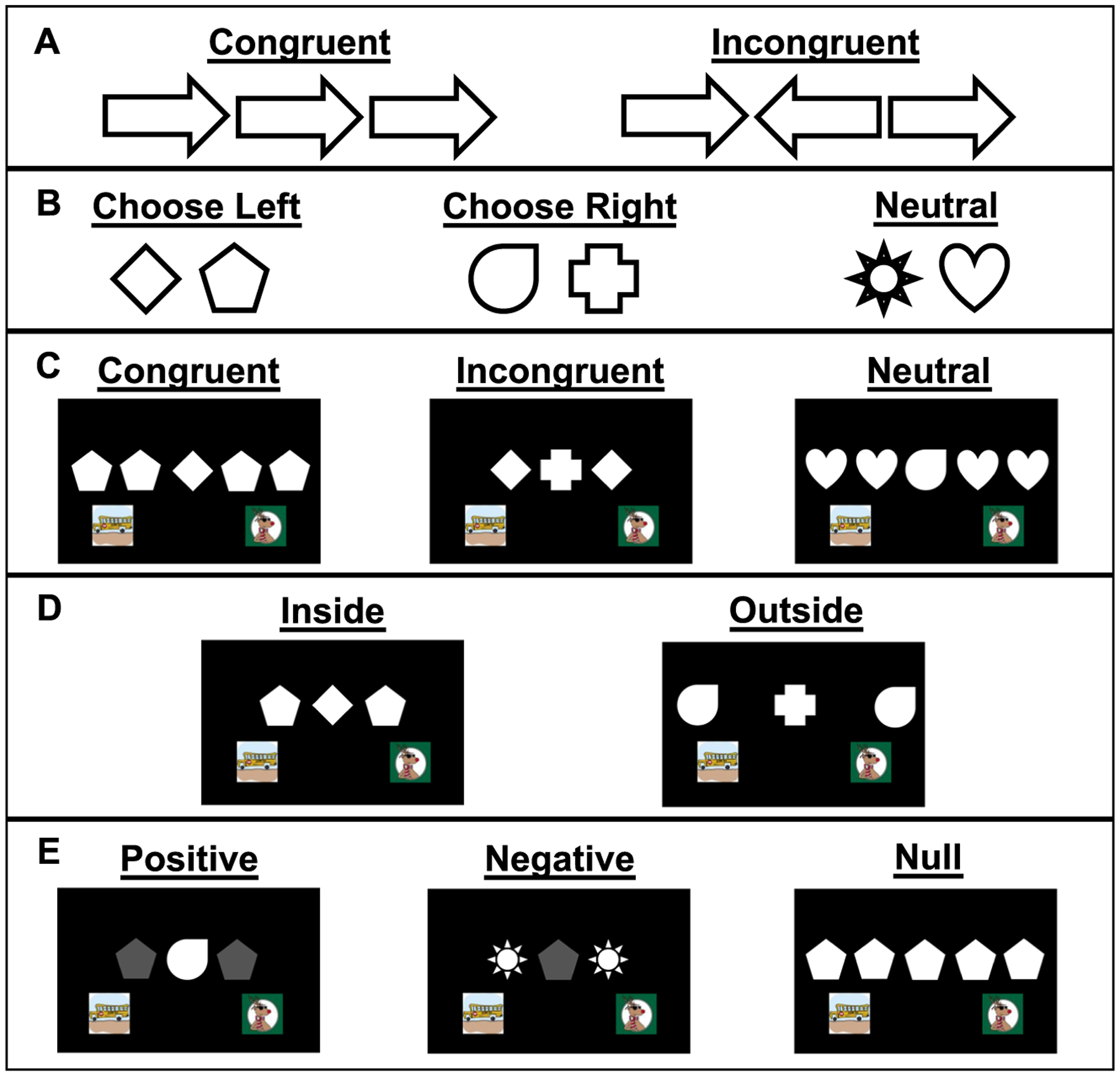Fig. 1.

Flanker task test types. a example of stimuli used with humans in the classic Erickson flanker test. Tests with monkeys were initiated by monkeys touching a green start square (not shown). b Monkeys were trained to associate centrally placed diamond or pentagon stimuli with a response to the lower left bus image; responses to the lower right reindeer image were correct if the central stimulus was a tear drop or a cross. Eight neutral stimuli (two shown here) were not associated with either a left or right response and never appeared as a central target stimulus. Any images “flanking” the central images were to be ignored. c The three trial types that appeared in Experiment 1. d Examples of inside and outside trials presented in Experiment 2. e The three types of luminance configurations used in Experiment 3. The null condition also included trials in which all stimuli were dim
